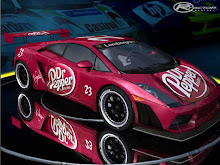 Quicksand is used a lot in movies that you see on TV. However, do you actually believe that it can pull anything down? Let's find out with this fun and easy experiment.
Quicksand is used a lot in movies that you see on TV. However, do you actually believe that it can pull anything down? Let's find out with this fun and easy experiment.
What you will need:
- one cup of maize cornflour
- half a cup of water
- a large plastic container
- a spoon
Please, do not try to do this in the classroom. If accidentally knocked over, there could be a hard day's work involved in just cleaning it up! The first step is very simple, just mix the cornflour and water thoroughly and your quicksand is made, but wait, here comes the fun part. Stir the mixture slowly and drip the quicksand, just so everyone knows it is a liquid.
If you stir it quickly, it will become hard which means that you can poke it, but try to poke it quickly, not hard. Maybe afterwards you should see if a small ball or something can be sucked down. Although, I can't guarantee anything. Remember to always stir instant quicksand before using it.
Did it work?
If you add just the right amount of water to the cornflour it becomes very thick, if you stir it quickly! This is because the cornflour grains are mixed up, and they can't slide over each other. Stirring slowly allows more water in between the cornflour grains, which makes it easier for them to slide over one another.
Remember, this is an outside activity, unless you want to be cleaning up all day!
Experiment written by SK.
Thursday, December 3, 2009
Do you have that sinking feeling?
Posted by
Leslie
at
2:53 PM
1 comments
![]()
Labels: quicksand
Wednesday, December 2, 2009
Floating Eggs
What you will need:
- one egg
- water
- salt
- a tall drinking glass
Pour water into your glass until it is about half full, (and I do mean about half full, not any measurements). Stir in lots of salt, about six tablespoons, and then fill the glass until it is almost full with plain water. Pour the plain water in gently - slowly, so that it doesn't mix up the heavier salt water.
Well, did it float or not?
Denser liquid is easier for things to float in. So, because tap water is less dense than salt water, the egg sinks through the tap water, and floats in the salt water! Which means you have an egg in the middle of your glass. If you were careful putting the plain water in with the salt water, they would not have mixed, which means you have two different types of water in one glass.
Written by SK on 2 December 2009.
P.S. Can you name any rocks that actually will float? Have a look here.
Posted by
Leslie
at
2:50 PM
3
comments
![]()
Change your shape

Well it's easy with our get-fat-quick chocolate recipe!
After a few helpings you will certainly be a different size!
4 tablespoons s.r. flour (cake flour)
4 tablespoons sugar
2 tablespoons cocoa
1 egg
3 tablespoons milk
3 tablespoons oil
3 tablespoons chocolate chips (optional)
A small splash of vanilla extract
1 large coffee mug
Add dry ingredients to your largest mug and mix well. Add the egg and mix thoroughly. Pour in the milk and oil and mix well. Add the chocolate chips (if using), vanilla extract then mix again.
Put your mug in the microwave and cook for 3 minutes at 1000 watts (high).
The cake will rise over the top of the mug, but don't be alarmed!
Allow to cool a little, and tip out onto a plate if desired.
Microwaves use radiowaves to heat food. Heat is made when radiowaves are absorbed by water, fats and sugars. Metal reflects microwaves, which is why we needed to use a coffee mug instead of metal for this recipe. Did you know that if you set a microwave to a higher heat than it should be set to, the outside of the cake will actually burn before the inside is cooked?
Don't eat it before it's cool. We hear that adding a scoop of icecream cools it down quickly.
Posted by
Leslie
at
12:21 PM
0
comments
![]()
Tuesday, September 8, 2009
Who can make a kazoo?
 We can, it's easy!
We can, it's easy!
First get your cardboard tube like you find in the middle of the gladwrap roll. You will also need a thin rubber band, a pair of scissors, textas or stickers to decorate it and a six inch square of waxed paper.
Vibrations are responsible for all the sounds we hear. We can experience vibrations using several of our senses: we feel the vibrations in our throat when we hum music, and on our lips as we play their kazoos.
Objectives:
- Define the word vibration
- Show that vibrations make sound
- Recognize that vibrations can be changed to alter the pitch of a sound
- Determine that sound travels through solids as well as gases (air)
What causes the kazoo to vibrate? Place the back of your hand gently against your lips and hum the same way you did for the kazoo. Again, you feel vibrations. Where are those vibrations coming from? Put your fingers lightly on your throat and hum again. The vibrations are coming from your vocal cords in your throat.
Air from your lungs moving across the tight vocal cords causes them to vibrate. That causes the air in your throat and mouth to vibrate. The vibrations are transferred from the vibrating air to the paper of the kazoo.
The vibrating paper then causes the air around it to vibrate. Because the paper is flexible and loose, it distorts the vibrations, giving the kazoo its interesting sound.
Posted by
Leslie
at
8:26 AM
0
comments
![]()
Labels: kazoo, sound vibrations
Monday, August 17, 2009
Boom baby boom!
The Mentos effect
To explain the foamy geyser that results from Mentos and Coke being combined you need to think of Physics.
Sodas like Coke contain compressed carbon dioxide. It's the gradual expansion and release of this pressurized gas in the form of bubbles that makes the fizz in carbonated drinks. It's the surface tension of the liquid - the strong attraction that bonds its water molecules together, that prevents the gas from escaping all at once.
When Mentos are added, that surface tension is disrupted by the additives in the candy - gelatin and gum arabic, and the outside surfaces of the Mentos provide encourages the rapid formation of bubbles. When you drop Mentos into a carbonated beverage, it causes the sudden release of pressurized gas which blows up out of the narrow neck of the Coke bottle giving a fantastic fountain effect. So drop some Mentos candies into a bottle of Coke, shake it up if you dare and MOVE away from it.
So drop some Mentos candies into a bottle of Coke, shake it up if you dare and MOVE away from it.
Oh, and do this outside. And guess what Ms S substituted for the Coke?
Look at the picture to see if you guessed correctly.
Posted by
Leslie
at
10:08 AM
0
comments
![]()
Labels: mentos and coke
Tuesday, August 11, 2009
A terrarium - Mary, Mary quite contrary
 How does your terrarium grow?
How does your terrarium grow?
First get a glass jar, then one quarter fill it with soil and add some plants. You can use moss or plant a small potato, or some apple seeds or an attactive small weed from your garden.
Water it carefully without making it too moist and put on the lid. Keep your terrarium in a well-lit, warm place and watch how the plant grows in its own little environment.
We did two terrariums in our class. One had ventilation holes in the lid and one terrarium remained sealed.
We predicted the outcomes in the two terrariums, would one survive or would both? We wrote a word bank and researched the respiration rate of plants. We compared desert plants and their needs to tropical rainforest plants.
Posted by
Leslie
at
2:01 PM
1 comments
![]()
Labels: terrarium
Fizz Whizz
 Chemical reactions - Alkaline Versus Acid
Chemical reactions - Alkaline Versus Acid
We are going to use bicarbonate of soda to see what liquids, both alkaline and acid, react to it.
The acidic liquids will be vinegar, lemon juice and Coke.
The alkaline liquids will be milk, raspberry cordial and coffee.
We will predict what will occur when bicarbonate of soda is introduced into firstly the alkaline liquids, then into the acidic liquids.
Remember, for every action, there is a reaction.
How does this experiment work: Bicarbonate of Soda reacts with acids, releasing carbon dioxide which bubbles up through the solution. The more acidic a liquid is (like vinegar), the more fizz will be produced.
Posted by
Leslie
at
12:15 PM
0
comments
![]()
Sunday, July 19, 2009
Mirror Writing

Mirror writing has been around for a long time. Over 500 years ago, Leonardo da Vinci used it to keep his inventions a secret.
It is writing that is the reverse of normal writing and has often been used as a code or cipher.
BUT the mirror doesn't always reverse everything.
Here is a verse which defies the power of the mirror. Print it out and try it for yourself.
M
Y
O
A
T
H
M
Y
V
O
W
M
Y
M
O
T
T
O
T
O
O
I
A
I
M
T
W
I
X
T
M
Y
T
H
T
O
O
U
T
W
I
T
Y
O
U
Posted by
Leslie
at
8:40 AM
0
comments
![]()
Tuesday, June 16, 2009
Balloon Busters!
 No - not like that! Today we are working with bicarbonate of soda and vinegar. We want to see if we can blow up a balloon without using our breath.
No - not like that! Today we are working with bicarbonate of soda and vinegar. We want to see if we can blow up a balloon without using our breath.
You will need a glass bottle, a balloon, bicarbonate of soda and some vinegar. You can substitute baking soda for the bicarbonate of soda.
Now for the fun! Nervous people (like me) stand well back. What do you predict will happen? If you are very brave, you can fill the balloon with a larger amount of bicarbonate of soda, and use more vinegar. It should produce a better result.
Using a teaspoon, fill the balloon part way with bicarbonate of soda. Fill the bottle part way with vinegar. Without letting the bicarbonate of soda in the balloon drop into the bottle, place the balloon carefully over the top of the bottle. Now watch as the bicarbonate soda falls into the vinegar.
As the bicarbonate of soda mixes with the vinegar it forms carbon dioxide gas and blows up the balloon!
How does this happen?
The vinegar mixes with the bicarbonate of soda to create a chemical reaction that produces carbon dioxide gas. The gas then blows up the balloon.
Here are some word bank examples:
balloon, bicarbonate of soda, vinegar, bottle, explode, expand, burst, carbon dioxide, gas, reaction, chemical.
Posted by
Leslie
at
11:44 AM
0
comments
![]()
Monday, April 27, 2009
Staying Alive! Keeping a pet rock
 Ah, ah , ah, ah staying alive, staying alive.
Ah, ah , ah, ah staying alive, staying alive.
No, it's not a singing contest, this is an exercise in pet management. First read Daisy the Curly Cat. Her latest pet, as many of her other ones got 'deaded', is a pet rock. Now go to the pet rock store. You have $100. Work out the supplies you will need, and write out the bill you will receive for all your purchases. Write a full description of your pet in case it gets lost. Investigate what type of rock your pet is. What are the three main types of rock? Discuss their characteristics and give examples of the different types.
Investigate what type of rock your pet is. What are the three main types of rock? Discuss their characteristics and give examples of the different types.
Activities:
* glue eyes on the rock
* write out a word bank/haiku/pet journal
* organise for it to go to a class, e.g. dance class/gymnastics/playgroup/sports day
* send it for a sleepover
* write out a diet sheet for its food
* photograph it/blog about it
* make a scrapbook page about it
* write down its funniest sayings
* dress it up for a costume party
* send it on a holiday
* write it a bedtime story
* make it a form of transport/bed/play equipment/house (like you would make a dog house)
* give it a name
* give it a birthday party and a present
* take it for a walk in the park and document what you did with it
* have a picnic
* teach it a trick
* make an icanhascheezeburger with it
Questions to answer:
- does the rock have two or more colours?
- is the rock sandy?
- does it make marks on paper?
- does the rock float in water?
- does the rock have layers?
- is the rock heavy?
- is the rock smooth or rough?
- does your rock have a fossil in it?
- can you name a rock that will float?
Word Bank:
igneous, sedimentary, metamporphic
molten, magma, lava
chemical, organic
crystalline
sandstone, basalt, crystal, marble, quartz, limestone, granite
smooth, rough, layers, hard
geologist
clastic
fossil
rock
Now you can write a journal entry called "A Day in the Life of My Pet Rock". Have a look at my siamese Pyewacket's entry.
Posted by
Leslie
at
10:28 AM
4
comments
![]()
Monday, February 9, 2009
Morse Code

Double click on the image to make it larger.
Morse code uses a sequence of short and long elements to represent a message. The short and long elements can be formed by sounds, marks, or flashes with a flashlight and are commonly known as "dots" and "dashes" or "dits" and "dahs".
It was originally created for Samuel Morse's electric telegraph in the early 1840s, and Morse code was also extensively used for early radio communication beginning in the 1890s. For the first half of the twentieth century, the majority of high-speed international communication was conducted in Morse code, using telegraph lines, undersea cables, and radio circuits.
The most popular current use of Morse code is by amateur radio operators. Pilots and air traffic controllers are usually familiar with Morse code and need to have a basic understanding.
The book Swallows and Amazons, which you can get on DVD, has a group of children going camping on an island and using Morse code and also semaphore, to communicate with each other.
Posted by
Leslie
at
5:12 PM
1 comments
![]()
Saturday, February 7, 2009
Hot enough to fry an egg

This is how hot it is in Australia's capital city right now. But, is it hot enough to fry an egg on the sidewalk? In cooking terms, an egg needs a temperature of 158F to cook, and most sidewalks do not get up to that temperature. The egg, when cracked open on the cement, cools it down. Black macadam sidewalks are hotter than gray ones, and using metal as well, can raise the temperature. So you could try using aluminium foil on top of the sidewalk surface.
In cooking terms, an egg needs a temperature of 158F to cook, and most sidewalks do not get up to that temperature. The egg, when cracked open on the cement, cools it down. Black macadam sidewalks are hotter than gray ones, and using metal as well, can raise the temperature. So you could try using aluminium foil on top of the sidewalk surface.
And lastly, you can place a pane of glass under a frypan, on top of the sidewalk or cement. For good measure, you can place another pane of glass on top of egg in the frypan.
Now, another way to try to cook an egg, is on the bonnet of a car that has been outside on a very hot day. Don't use a teacher's car, you're likely to get detention.
Posted by
Leslie
at
10:55 AM
2
comments
![]()










